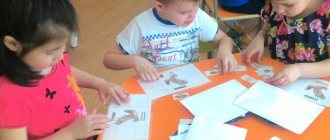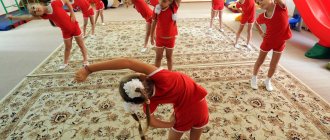From birth, the baby develops, learning about the world around him. An important role in the development of a small personality is played by the creation of a special environment - a space filled with games and activities that are aimed at acquiring new knowledge, skills and abilities. Of particular importance are developmental games - games that help improve fine motor skills, develop thinking, creative imagination, and reinforce the skills of making independent decisions. There are two main principles that are embedded in them and which are fully consistent with the Montessori method:
- learning through play is a consistent path from simpler to more complex;
- Learning with the help of a development tool is carried out independently according to ability - by solving a new problem each time, the child reaches a new “bar” of his capabilities.
Why do we need children's development tools?
Let’s try to break down the generalized answer that we gave above “on the shelves” - this will be useful for parents when creating a developmental environment at home.
- Every new educational game, both in the subject and in the logical part, gives the child new “food” for the mind.
- Activities of this type help the child develop comprehensively (fine motor skills, speech, coordination of movements, logical thinking, creative imagination).
- The conditions set in the development program invariably outstrip the development of the baby’s abilities. It is as if he is gradually solving a new problem.
- By completing tasks independently and once again reaching the “ceiling” of their capabilities, the child develops most successfully.
- By playing educational games with their baby in the home environment, parents, perhaps without realizing it, learn themselves - patience, the need to provide the child with complete independence in choosing decisions and actions where he can and should do it himself. No “mentoring” - only communication and observation!
It is based on the child’s interest and natural desire for self-learning.
It is important for fathers and mothers to remember: they should not force a child to play - just set him an interesting game situation, give him a “beacon”. There are many educational toys of a very different nature, and if the child refuses one, offer him another. At the same time, and by their nature, it is better to alternate such games, without getting hung up on similar and uniform ones, even if they are built according to the principle of steps. And, what is also important, the child himself sets the pace and rhythm of the lesson and has the right to stop it. You should not insist on continuation, so that the child does not lose interest in it and does not carry it out “through force.”
Age-related developmental features
In accordance with the Montessori program, educational games are focused on the age characteristics of children. And they are like this:
- A child’s speech development begins and continues intensively from 0 to 6 years. At 2-2.5 years of age there is a dynamic accumulation of vocabulary, at 3.5-4 years the use of speech becomes fully conscious, by 4-4.5 years he actively uses it to solve his problems, and at 5 years he learns to read (understand other people's thoughts).
- Active development of fine motor skills is typical for the period from 1.5 to 5.5 years. It is closely related to speech development. The child learns to manipulate small objects, comprehends the concepts of part and whole, and his logical thinking develops.
- Sensory senses (vision, hearing, smell, tactile perception) develop sensitively from birth to 5.5 years.
- Perception and establishment of order in behavior, in time, in the environment - from 0 to 3 years.
- Mastering various actions, physical, motor development is carried out in parallel with mental and sensory development, especially the active stage - from one to 4 years.
- The sensitive period of socialization, the assimilation of forms of communication with peers and elders are characteristic of the age from 2.5 to 6 years.
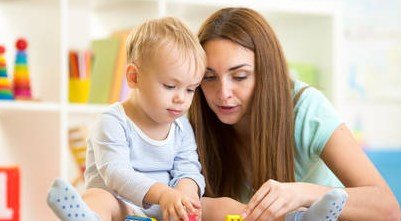
Early development methods and programs
Nowadays a fairly large number of proprietary programs and techniques are known. But if we talk about early development schools, then the most widely used method is M. Montessori and classes based on the manuals of N. A. Zaitsev.
Waldorf pedagogy
Founder
: Rudolf Steiner, German philosopher and esotericist, developer of the direction of anthroposophy. The first Waldorf school was opened in Germany in 1919, for the children of workers (hence the name of the pedagogy itself).
Basic provisions
: Waldorf pedagogy is initially focused on the child’s personality and consists of developing his natural abilities. Waldorfs believe that childhood is a wonderful age that we should try to extend. Therefore, the main emphasis is on the development of artistic, musical and theatrical abilities. Education is largely based on the principle of imitation and repetition of the teacher. Great importance is attached to the emotional state of the child. But early development of intelligence is considered unacceptable, i.e. learning to read and write here begins extremely late. In a Waldorf kindergarten, much attention is paid to manual labor: all children learn to embroider, cook, carve wood, work on a pottery wheel, and even grow vegetables. The toys here are unusual: most of them are made by children’s hands or are objects made from natural materials, usually unpainted wood or clay, because... This develops the baby's imagination and creativity. Often such groups have their own living corner, where the guys learn to care for our little brothers. Waldorf kindergartens constantly host holidays and stage theatrical performances.
Age
: groups in kindergarten are not divided among themselves by separate ages, but are a mixed, multi-age group from 3 to 6 years. It is not recommended to send your child to kindergarten at an earlier age.
Classes
: modeling, drawing, cooking, music (most often a flute or folk instruments), eurythmy (movements to music), theater, etc.
Methodology of M. Montessori
Founder
: Maria Montessori, Italian teacher; one of the first women to receive a medical degree; Professor of Anthropology and Hygiene at the Women's Higher School. Initially, her classes were designed for children with developmental delays. But the results that the children achieved were so amazing that a reasonable question arose: what would happen to ordinary children if similar classes were carried out with them. And after some time, the first kindergarten for ordinary children was opened.
Basic provisions
: the main principle of Montessori groups is “help me do it myself,” i.e. the initiative for any action should come from the child, and the teacher only helps and guides the child. After all, if we constantly do everything for children (spoon feed, tie shoelaces, etc.), then they themselves will never learn this. For this purpose, Montessori teachers have developed a huge amount of developmental material. All the manuals are beautiful, interesting and pleasant to the touch. They are arranged from simple to complex, from concrete to abstract and are always fully accessible to the children. Thus, the child himself chooses when and what he will do, for how long and with which of the children he will cooperate. M. Montessori substantiated that every child has a need for development, so he himself will always strive for new knowledge. And the developing environment will help him with this. Even M. Montessori drew attention, and modern psychology has confirmed that every child experiences sensitive periods, i.e. those moments of his life when he most easily and naturally learns certain things (for example, the most favorable period for learning to read is from 3 to 5.5 years; and the sensitive period for the perception of order lasts from 2 to 4 years). And if you take into account these features of children’s development, then learning will take place easily and naturally.
Age
: There are classes in “mother + baby” groups, which are attended by parents with children from 1 to 3 years old. And children from 3 to 6 years old are already studying in groups independently.
Classes
: in each Montessori group the learning environment is built in a certain way. With the help of manuals, you can learn many things: pour water from a jug into cups, spoon cereal, read, write, and also study pets and seasons. All material is divided into five zones: practical life; sensory (development of sense organs); mathematics; Russian language; space (knowledge about the surrounding world). In order for the child to work correctly with the new manual, the teacher conducts a presentation of the material, i.e. shows and, if necessary, explains what and how to do. All Montessori materials are designed so that the child can control his own mistakes. The teacher does not need to point out shortcomings in the child’s work, thereby the child does not have a feeling of fear if he has done something wrong, and he is confident in his abilities.
Methodology of N. Zaitsev
Founder
: Nikolay Aleksandrovich Zaitsev - teacher of Russian and English languages, academician of the Academy of Creative Pedagogy, author of new directions in methods of teaching reading, teaching mathematics and grammar.
Basic provisions
: N.A. Zaitsev developed a method for teaching reading using sounding cubes. The technique is based on the principle of warehouse reading. Adults together with children or the children themselves sing songs written on tables or measured on the sides of cubes, which differ in color, size and sound (inside the cubes there are various objects that make sound). By playing with these cubes, children learn to form simple words, write the names of objects; with the help of a pointer they do the same on the tables. And soon they begin to read street signs, magazine titles, and even their first books.
Zaitsev's manuals are good for their combination of clarity and systematic approach; they are specific and comprehensive at the same time. But his method is not only teaching reading, he also developed manuals for learning numbers, there are also “Favorite Pictures”, “Road Signs”, “Read and Sing” (teaching reading through singing), “Thousand +” (teaching mathematical operations , working with the square of a number), “I write beautifully” (learning calligraphy).
Age
: You can start classes on Zaitsev’s cubes at any age. But if we are talking about group classes, then the best age is 4-5 years. On the one hand, the kids have already grown up, they are drawn to other children, it is easier for them to adapt to a new environment, and on the other hand, the children already know what a book is, they understand why they need to learn to read, and they accept the “rules of the game” with pleasure. . Therefore, it is at this age that learning occurs most quickly and easily.
Very often, teachers in early development schools are proficient in several methods and use them in directly teaching children.

Developers by age
The long-term practice of Montessori teachers shows how effective educational toys are for the overall development of children, starting from a very early age. We will give only certain types of developmental classes conducted in different age groups. It should be noted that in addition to special didactic materials, the simplest household items serve as game elements: cereals, buttons, jars, boxes, and for home activities, it will not be difficult for parents to prepare such material themselves.
From 1 year to 2 years
At this age, a child is interested in everything. The world is being actively explored; the baby needs to touch and taste everything. He enthusiastically plunges into his activities and does them with pleasure. It is important that developmental toys help develop concentration, fine motor skills, and coordination of movements. These activities include:
Drawing on small grains. Semolina or other small grain becomes a “sheet of paper”. You can draw on it with your fingers, leave fingerprints, handprints. Fine motor skills are most actively involved here, which activates several areas of the brain at once, including those responsible for speech development. In addition, the fingertips and the surface of the palm are gently massaged. You can draw with a brush, stick, or other objects, which allows you to develop not only fine motor skills, but also creative imagination.
Sorting, arranging small items into cups, jars, bottles. For this, buttons, beans or, for example, pieces of a mosaic will be useful. And again, fine motor skills actively manifest themselves here, logical thinking develops, and the child learns concentration. You just need to carefully monitor the process - at this age the baby is interested in tasting everything.
In addition, in this age range a child can learn:
- hold the spoon correctly;
- pour water from vessel to vessel;
- close and open zippers, buckles, Velcro, buttons;
- and many many others!
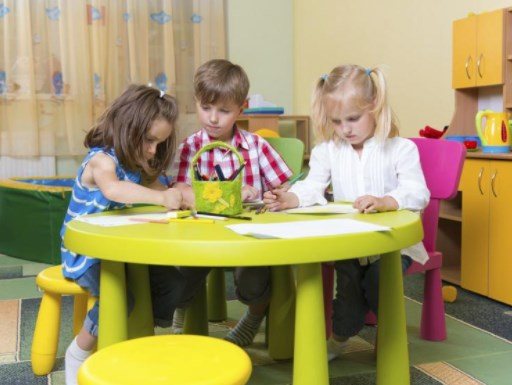
Developmental activities for 2 - 3 years
Around the age of three, the baby enters the peak sensitive period of sensory development. All five senses absorb information from the surrounding world like a sponge. He no longer just wants to touch the object, but also to understand its “filling”: how the latch works, how the lock opens or the clasp unlaces. But many objects can pose a risk of injury. The solution was found by Maria Montessori herself back in 1907: it was she who invented the first busy board - a “smart board”, on which all sorts of useful things interesting for the baby are collected. You can touch, press, twist, and check “how it works” without fear. By mastering new material with interest, the child perfectly develops fine motor skills and learns to logically comprehend the interconnection of processes. A water tap, a clock face, a compass, a telephone dial, switch buttons - the list of items goes on and on.
Parents can make such a board themselves. You just need to exclude the presence of piercing, sharp, cutting objects and take into account the fact that a “smart board” is being made for a boy or girl.
You can also continue, but in a more complicated form, activities with transfusions, pouring and sorting small items, with clothespins and other materials.
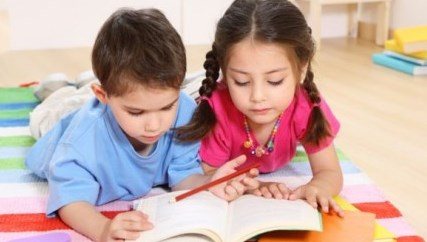
Developmental activities for 3 - 4 years old
The child becomes more independent, and his vocabulary is actively expanded. Important points that need to be emphasized are exercises from practical life, classes on speech development, and preparing the hand for writing.
- Practical life exercises (cleaning, watering flowers, cleaning clothes) help the baby feel independent and self-reliant.
- Further development of fine motor skills to prepare the hand for writing. Exercises for opening and closing all kinds of locks, for pouring, sorting small objects are gradually becoming more complex, and classes are carried out on cutting, embroidering, and shading surfaces.
- Speech skills are intensively mastered. The child studies with interest with cards to enrich his vocabulary, participates in games to develop phonemic hearing and articulation, and memorizes poems, tongue twisters, and nursery rhymes.
Developmental activities for 4 - 6 years old
At this age, the basic skills from practical life have already been mastered. From the age of 4, the child begins to show an active interest in counting, as well as in written and oral native speech. Activities such as:
- writing on semolina or sand - this makes it easier and more interesting to improve in writing your first letters;
- composing simple words using the movable alphabet;
- using rough letters to name sounds;
- writing on a blackboard with chalk;
- shading frames to reinforce skills.
Reading. In accordance with the Montessori method, teachers turn to it only after making sure that the child has mastered the sound designation of letters and can form simple words from the alphabet. Your child will be interested in activities such as:
- phonemic games with naming the first letter with which the object begins;
- naming signatures on cards with various pictures and boxes with figures;
- reading simple tasks and completing them;
- reading simple books, including homemade books.
The child will also take with interest lessons with abacus, which will gradually become more complex by the age of six. During the same period, he actively mastered various creative techniques - in accordance with the Montessori method, the emphasis is not on the images created, but on the techniques, variety of materials and tools used. And, of course, the world around us is being studied more and more actively: maps and images by category (animals, countries, cities, etc.) are used in the space zone; all kinds of experiments that allow us to visually comprehend various phenomena are of great interest. Children who have already mastered writing skills can write down the results of their observations or experiments.
Early childhood schools
You can develop your baby not only at home. Today, many early development schools have been created to help parents. They work using different methods and programs developed by teachers, doctors, psychologists and other specialists. Many have been developed and improved over many years. These schools employ qualified teachers who have studied these methods, have experience in working with children (and this is especially important for young mothers who have their first child) and most of them have a pedagogical education. Schools are equipped with educational materials (Zaitsev cubes, Montessori frames, natural materials, different types of letters and numbers, tables and much more), many have additional sports facilities (sports complexes, swimming pools, sports tracks, dry pools, etc.), in Some also offer music classes for the little ones. Therefore, of course, early development schools are wonderful assistants in a child’s education.
Age
In early development schools, there are usually several groups, each of which solves its own age-related problems and works according to a special program. They are formed by age or depending on the type of activity. So, for example, classes could be:
- from 0 to 6 months;
- from 5 to 10 months;
- from 9 months to 1.5 years.
As a rule, each group has its own age restrictions. At the same time, there is no definite answer when to start classes and where it is better to go. The decision is made by parents, taking into account the individual characteristics of the child, his desire to attend classes and the recommendations of doctors.
Types of activities
Classes in early development schools vary in time and duration; there are also weekend groups. If you have the opportunity to choose, then morning hours are best for studying. It is at this time that the child is full of strength and energy, and therefore will better perceive new information. If the child is under 3 years old, you need to exercise no more than 2-3 times a week for 40-60 minutes. If your child is older, you can increase both the time of classes and their frequency.
Classes are:
- individual, when the teacher works one-on-one with the child;
- group: one or two teachers work with a group of children;
- individual lessons with mother and baby (this is usually required if the baby is developmentally delayed or has health problems);
- “mother + baby”: classes are held in a group of children with their parents.
Before classes, the child should sleep well and eat.
Marina, 1.8 years old. At first, she cried constantly and refused to do anything. It turned out that the time of classes partially overlapped with the second sleep. And the girl was woken up early so as not to be late for the start of the lesson. When the class times were changed, Marina began to study with pleasure and now rushes to class herself.
“Advantages” of classes in early development schools
As we have already said, early development schools usually have a variety of developmental materials.
It makes no sense to buy such a large number of benefits for home. Firstly, it's expensive; secondly, it takes up a lot of space; and perhaps most importantly, they cater to a wide range of children based on age, interest and developmental level. Classes held in such groups are adapted specifically for children of a certain age. Most of the lessons take place in a playful way. After all, children perceive new knowledge best through play. It is very good if the classes contain different types of exercises: intellectual, musical, artistic, physical, etc. Kids still cannot concentrate on one activity for a long time, and they need a change of activity. The best option is to alternate exercises that require perseverance and attention with active movements. For example, when between intellectual classes there is a physical training session or a short dance warm-up.
By attending classes in an early development group, the child acquires new knowledge. As we have already said, until the age of 6-7 years, the educational process is easy for a child, brings pleasure and does not require additional motivation. But by studying at “school”, the child not only gains new knowledge, he learns to learn. The baby learns to set tasks for himself - albeit small, but so necessary (for example, to put another cube on his own, draw a circle, or simply put away the paints), think logically and draw his first conclusions. He trains his memory, develops fine and gross motor skills, and gradually, day by day, his concentration increases. And another very important point: the child learns to be independent.
A very important factor in favor of early development schools is social. From a very early age, children learn to communicate with each other, build relationships with “strange” adults, ask for help, resolve conflict situations and simply be friends. After all, what is a baby’s world at home is essentially the world of adults. Who surrounds the little man - moms, dads, grandparents, uncles and aunts who love him very much and are ready to do everything for him. And these adults make most of the decisions for the child. And even if somewhere on the playground a conflict situation arises between children or a controversial issue, it is usually decided by adults too. And when he finds himself in an environment where there are many children, the child learns to do it himself. And in general, we learn the art of communication all our lives, and the sooner our child begins to comprehend this difficult science, the easier it will be for him later. And one more pleasant moment: new friends appear not only among children, but also among their parents.
Veronica, 23 years old. “When Polinka was born, we moved to another area, where I didn’t know anyone, and I called my work friends less and less often: they have a balance sheet and a quarterly report, I have my daughter’s first steps and her first words... When Polinka turned one year old, we went to “mother + baby” classes, where mothers and children from 1 to 3 years old studied. And there I met people who had the same interests as me, and who were concerned about the same issues as me... It was nice to discuss together how children grow, what to feed or what is the best treatment, and also where we can go together go..."
“Disadvantages” of classes in early development schools
Perhaps one of the most significant disadvantages of early development schools is their cost. Unfortunately, very few of these schools are funded by the state or receive financial support from the municipality, and, as a rule, they are self-sustaining. Expensive rent of premises, purchase of materials, salaries of teachers and other expenses fall on the shoulders of parents. And therefore, the cost of such classes is often quite high.
In young children, immunity to infectious diseases is still poorly developed. And if someone in the group gets sick or does not receive treatment, then there is a high probability that other children will also become infected. Therefore, children often get sick during the first year. But gradually the body’s resistance to these viruses increases, which reduces the likelihood of subsequent illness.
The school is not always located close to home. And then the question arises: how to get there? A long journey is a big challenge for a child, and the difference between a car and public transport for a child is colossal. And if you can take a pleasant walk in September, then think about how you will get there in winter. Remember the doctors' recommendations: the maximum travel time should not exceed 20 minutes.
When children go to the same group, mothers involuntarily begin to compare the children's successes. As a result, they worry themselves (after all, there will always be someone who has succeeded more in something than your child). But it is especially bad when parents begin to point this out to the child, thereby taking the first steps towards the child developing an inferiority complex. It is important to remember that early development is not when your baby does something better than another child, but when he does something better than himself! Those. compared to what he would have been like if he had not been dealt with.
Unfortunately, some parents believe that attending classes in a preschool institution is more than enough, thereby completely shifting the responsibility for the upbringing and development of the child to the teacher. This is fundamentally wrong; not a single super-wonderful early development school can replace your communication with your child! Reading books, exciting walks, conversations, playing sports, and simply playing together - all this also affects the formation of the baby’s personality.
The importance of developmental activities according to the Montessori system
In a small material it is not easy to cover the entire range of possibilities and discoveries for a child that the Montessori child development program offers. Developing comprehensively, the child gains practical life skills; through tasks, games and exercises, his sensory, speech apparatus, logical and creative thinking are improved.
However, the most important thing that a future schoolchild gains is internal independence, independence in choosing decisions, a willingness to work and achieve results and independently find and correct his mistakes - everything that is necessary for the formation of a full-fledged personality. It is no coincidence that all of the listed and other Montessori developmental activities are based on the key principle of this direction in pedagogy: “Help me do it myself.”
What are themed weeks?
Weeks like these bring together the immensity. More precisely, they include all types of children's activities and are aimed at ensuring that the child, first of all, finds it interesting, exciting, educational and asks for more such activities.
When conducting such classes, the child greatly expands his horizons, studies a certain topic in depth, and develops diversified. He fantasizes with his mother and, of course, plays.
A great way to develop early at home. You can invite friends, it will be even more fun and interesting.
Themed weeks can be spent with children from one year old to school. Accordingly, for kids we take very simple tasks, and for older children we complicate the tasks and introduce new age-appropriate exercises.
So it’s much easier for mom to do things, she doesn’t have to invent anything about what to do with her baby today.
Invent a magic box or a magic mailbox or a chest at home, as you wish.
In which you will put tasks for the whole week or for every day, unnoticed by the child.

This is great discipline. And the children will be excited about something new and interesting every day.
You can also leave surprises for your child in it, just be careful! Children get used to it very quickly and then, if the treasured surprise is not there, they begin to tear at this poor box and look inside every five minutes.
Thematic weeks, based on their name, are dedicated to a specific topic or holiday that should happen that week.
It turns out that you play a very interesting game for several days: either fly into space on Cosmonautics Day, or create magic during the Christmas holidays.
We give children a fairy tale and the opportunity to visit it, since modern children become adults very quickly and practically do not believe in miracles.
So a neighbor’s 3.5-year-old kid told me that there is no Santa Claus and that all this is an invention of adults! But what about the flight of fancy and expectation of a miracle?
In fact, it is not the topic itself that is interesting to children, although this also happens.
But mostly they enjoy the process, what is included in this week, what awaits them, what needs to be made, what to play.

